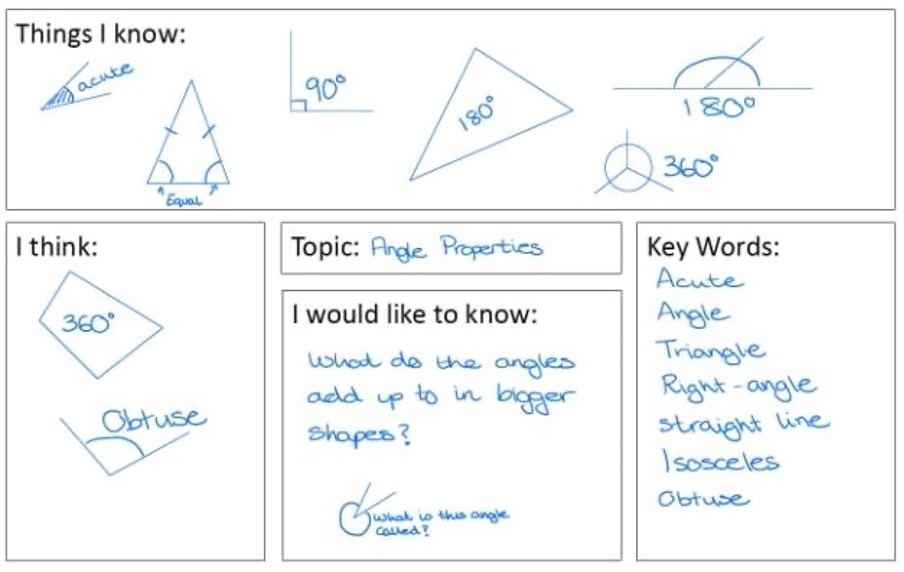Formative assessment allows us to gauge how individual students are progressing and adapt our teaching accordingly. Formative assessment activities can take the form of written exercises in class, quizzes, competitions, and games. However, these activities take time to prepare, set-up, conduct, reflect on and give feedback. How often can we conduct this type of assessment in the week?
Dylan Wiliam recommends that we schedule opportunities for whole-group formative assessment in every lesson. If I haven’t “surveyed” the learning of my entire class, how can I make educated decisions about what to do next? If I pose a brilliant “hinge” question (the kind that shine light on misconceptions) to the class, but allow a single, enthusiastic, hand-raising student to answer, I have missed an excellent opportunity to know more about the learning of every other student. Effective formative assessment should require every member of the class to produce an answer, giving me the opportunity to check on each student’s developing understanding.
Effective formative assessment has a few common characteristics (from Professor Raphael Pasquini HEP- Lausanne):
- It is a simple task that builds towards the summative assessment.
- It does not receive a grade.
- It is embedded in the learning process.
- Its goal is to give feedback about learning and as a result encourages self-regulation.
- It can be formal (paper & pencil) or informal (observations, conversations, etc.).
- It involves students in the process (of creating assessment, of using assessment, of giving/receiving feedback, etc.).
Below are five quick and simple activities you can use to “survey” the level of learning of your whole class.
- “Closed” multiple choice question(s) “poll”. Project a question or write it on the board– consider the format “Which of the following does not fit (condition) X?” or “Which of the following is an example of (definition/category) Y?”. Students use the fingers on one hand to show their answer: one finger for A, two for B, etc. All students must participate; warn them that anyone can be called to justify their answer.
- Follow-up actions:
- Call 1-3 students with different answers to justify their choices.
- Pair up students with someone who chose a different answer and have each justify their choice.
- Poll again before discussing the correct answer.
- Group all the students that chose a specific answer to come together and explain—check whether they chose the answer for the same reason and if they arrived at the answer via different methods.
- Follow-up actions:
- Short-answer question on index cards. Consider the format “Write an example of an X” or “Write an example and a nonexample of Y”. Students write on the card and turn it. (Cards can be reused for different questions.)
- Follow-up actions:
- Read aloud only correct answers. Allow students to ask questions of others.
- Read aloud wrong answers. Ask students to correct them.
- (If not anonymous) Pair students to prepare a defense for their answers (if all correct or incorrect) or to discuss (if mixed correct with incorrect).
- Explain correct answers responding to misconceptions you observed during the exchanges.
- Follow-up actions:
- Thumbs-up. After explaining or reviewing a concept, ask students to gauge how confident they are in the knowledge that they could explain it to someone else. Thumbs-up= very confident; thumbs-sideways= not-so-confident; thumbs-down = not confident.
- Follow-up actions:
- Knowing who is “very confident” explaining, you can have them discuss their strategy to present and then pair or group them with the “not-so-confident” while you work with the “not confident” group.
- If many are in the latter two groups, consider giving students direct instruction or additional learning materials (video, text, diagram).
- Follow-up actions:
- Exit Tickets (end of lesson). Before students leave, they answer a short question on a post-in. You can use the board or poster paper. E.g. “Write down a question you still have from the unit’s content”; “What title best summarises our learning today?”; “What would you do if…”; “True or False…”.
- Follow-up actions:
- Quickly review the answers. Make notes of any points to clarify or correct for the next lesson.
- Display all responses at the next lesson and invite students to address/clarify/draw connections.
- Select specific responses to share as particularly elucidating for the group. Celebrate funny/original answers.
- Follow-up actions:
- One-minute papers. If you make copies of the following template, these can be handed out at any point in the lesson for a “brain dump”, which consolidates learning and lets you make a quick assessment of what has been learnt.
- Follow-up actions:
- Each section can be reviewed for the entire group (e.g. compare section “Things I know” with “I think”, or respond to “I would like to know”, etc.).
- Consider metacognitive implications for a single student, as necessary.
- Invite students to reflect on their “one minute papers” later in the year, when they can draw conclusions about their learning process.
- Example
- Follow-up actions:

My goal is to engage in at least one whole-group formative assessment activity every lesson. It’s harder than it seems, but only until we embed the practice!
Sources:
- Benjamin, Zoe. “17 Easy To Use Formative Assessment Examples To Develop Your Approach To Teaching and Learning”. Accessed 14 February 2024.
- “Tools for Formative Assessment – Techniques to Check for Understanding – Processing Activities “ Compiled by K Lambert, OCPS Curriculum Services, 4/2012 (excellent resource!)
- Thomas, Laura. “7 Smart, Fast Ways to Do Formative Assessment”. Accessed 14 February 2024.
- Wiliam, Dylan. Embedded Formative Assessment, 2nd edition. Solution Tree Press. 2017.
Very valuable practical recommendations! The only way to evolve is through feedback and reflection.